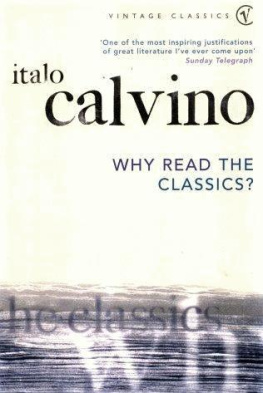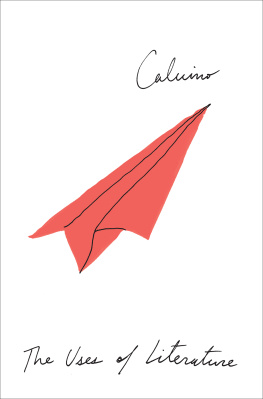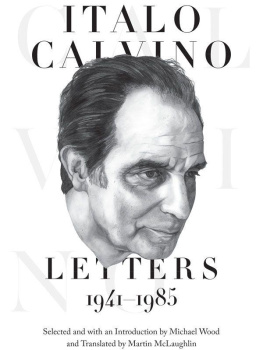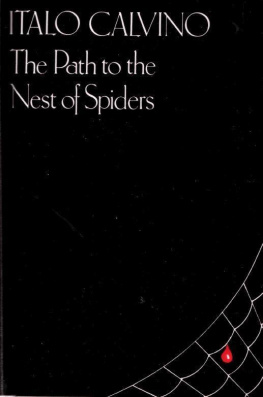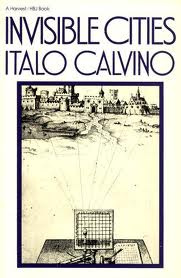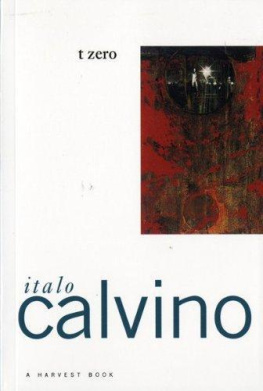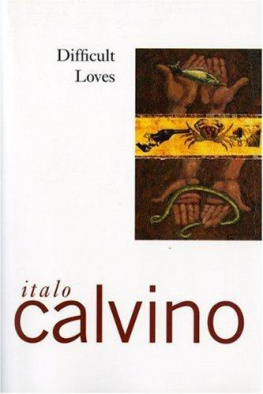Italo Calvino - Mr. Palomar
Here you can read online Italo Calvino - Mr. Palomar full text of the book (entire story) in english for free. Download pdf and epub, get meaning, cover and reviews about this ebook. year: 1986, publisher: Mariner Books, genre: Romance novel. Description of the work, (preface) as well as reviews are available. Best literature library LitArk.com created for fans of good reading and offers a wide selection of genres:
Romance novel
Science fiction
Adventure
Detective
Science
History
Home and family
Prose
Art
Politics
Computer
Non-fiction
Religion
Business
Children
Humor
Choose a favorite category and find really read worthwhile books. Enjoy immersion in the world of imagination, feel the emotions of the characters or learn something new for yourself, make an fascinating discovery.

- Book:Mr. Palomar
- Author:
- Publisher:Mariner Books
- Genre:
- Year:1986
- Rating:3 / 5
- Favourites:Add to favourites
- Your mark:
- 60
- 1
- 2
- 3
- 4
- 5
Mr. Palomar: summary, description and annotation
We offer to read an annotation, description, summary or preface (depends on what the author of the book "Mr. Palomar" wrote himself). If you haven't found the necessary information about the book — write in the comments, we will try to find it.
Mr. Palomar — read online for free the complete book (whole text) full work
Below is the text of the book, divided by pages. System saving the place of the last page read, allows you to conveniently read the book "Mr. Palomar" online for free, without having to search again every time where you left off. Put a bookmark, and you can go to the page where you finished reading at any time.
Font size:
Interval:
Bookmark:
Translated from the Italian by William Weaver
The sea is barely wrinkled, and little waves strike the sandy shore. Mr. Palomar is standing on the shore, looking at a wave. Not that he is lost in contemplation of the waves. He is not lost, because he is quite aware of what he is doing: he wants to look at a wave and he is looking at it. He is not contemplating, because for contemplation you need the right temperament, the right mood, and the right combination of exterior circumstances; and though Mr. Palomar has nothing against contemplation in principle, none of these three conditions applies to him. Finally, it is not the waves that he means to look at, but just one individual wave: in his desire to avoid vague sensations, he establishes for his every action a limited and precise object.
Mr. Palomar sees a wave rise in the distance, grow, approach, change form and color, fold over itself, break, vanish, and flow again. At this point he could convince himself that he has concluded the operation he had set out to achieve, and he could go away. But isolating one wave is not easy, separating it from the wave immediately following, which seems to push it and at times overtakes it and sweeps it away; and it is no easier to separate that one wave from the preceding wave, which seems to drag it toward the shore, unless it turns against the following wave, as if to arrest it. Then, if you consider the breadth of the wave, parallel to the shore, it is hard to decide where the advancing front extends regularly and where it is separated and segmented into independent waves, distinguished by their speed, shape, force, direction.
In other words, you cannot observe a wave without bearing in mind the complex features that concur in shaping it and the other, equally complex ones that the wave itself originates. These aspects vary constantly, so each wave is different from another wave, even if not immediately adjacent or successive; in other words, there are some forms and sequences that are repeated, though irregularly distributed in space and time. Since what Mr. Palomar means to do at this moment is simply see a wavethat is, to perceive all its simultaneous components without overlooking any of themhis gaze will dwell on the movement of the wave that strikes the shore until it can record aspects not previously perceived; as soon as he notices that the images are being repeated, he will know he has seen everything he wanted to see and he will be able to stop.
A nervous man who lives in a frenzied and congested world, Mr. Palomar tends to reduce his relations with the outside world; and, to defend himself against the general neurasthenia, he tries to keep his sensations under control insofar as possible.
The hump of the advancing wave rises more at one point than at any other, and it is here that it becomes hemmed in white. If this occurs at some distance from the shore, there is time for the foam to fold over upon itself and vanish again, as if swallowed, and at the same moment invade the whole, but this time emerging again from below, like a white carpet rising from the bank to welcome the wave that is arriving. But just when you expect that wave to roll over the carpet, you realize it is no longer wave but only carpet, and this also rapidly disappears, to become a glinting of wet sand that quickly withdraws, as if driven back by the expansion of the dry, opaque sand that moves its jagged edge forward.
At the same time, the indentations in the brow of the wave must be considered, where it splits into two wings, one stretching toward the shore from right to left and the other from left to right, and the departure point or the destination of their divergence or convergence is this negative tip, which follows the advance of the wings but is always held back, subject to their alternate overlapping until another wave, a stronger wave, overtakes it, with the same problem of divergence-convergence, and then a wave stronger still, which resolves the knot by shattering it.
Taking the pattern of the waves as model, the beach thrusts into the water some faintly hinted points, prolonged in submerged sandy shoals, shaped and destroyed by the currents at every tide. Mr. Palomar has chosen one of these low tongues of sand as his observation point, because the waves strike it on either side, obliquely, and, overrunning the half-submerged surface, they meet their opposites. So, to understand the composition of a wave, you have to consider these opposing thrusts, which are to some extent counterbalanced and to some extent added together, to produce a general shattering of thrusts and counterthrusts in the usual spreading of foam.
Mr. Palomar now tries to limit his field of observation; if he bears in mind a square zone of, say, ten meters of shore by ten meters of sea, he can carry out an inventory of all the wave movements that are repeated with varying frequency within a given time interval. The hard thing is to fix the boundaries of this zone, because if, for example, he considers as the side farthest from him the outstanding line of an advancing wave, as this line approaches him and rises it hides from his eyes everything behind it, and thus the space under examination is overturned and at the same time crushed.
In any case, Mr. Palomar does not lose heart and at each moment he thinks he has managed to see everything to be seen from his observation point, but then something always crops up that he had not borne in mind. If it were not for his impatience to reach a complete, definitive conclusion of his visual operation, looking at waves would be a very restful exercise for him and could save him from neurasthenia, heart attack, and gastric ulcer. And it could perhaps be the key to mastering the worlds complexity by reducing it to its simplest mechanism.
But every attempt to define this model must take into account a long wave that is arriving in a direction perpendicular to the breakers and parallel to the shore, creating the flow of a constant, barely surfacing crest. The shifts of the waves that ruffle toward the shore do not disturb the steady impulse of this compact crest that slices them at a right angle, and there is no knowing where it comes from or where it then goes. Perhaps it is a breath of east wind that stirs the seas surface against the deep drive that comes from the mass of water far out to sea, but this wave born of air, in passing, receives also the oblique thrusts from the waters depth and redirects them, straightening them in its own direction and bearing them along. And so the wave continues to grow and gain strength until the clash with contrary waves gradually dulls it and makes it disappear, or else twists it until it is confused in one of the many dynasties of oblique waves slammed against the shore.
Concentrating the attention on one aspect makes it leap into the foreground and occupy the square, just as, with certain drawings, you have only to close your eyes and when you open them the perspective has changed. Now, in the overlapping of crests moving in various directions, the general pattern seems broken down into sections that rise and vanish. In addition, the reflux of every wave also has a power of its own that hinders the oncoming waves. And if you concentrate your attention on these backward thrusts, it seems that the true movement is the one that begins from the shore and goes out to sea.
Is this perhaps the real result that Mr. Palomar is about to achieve? To make the waves run in the opposite direction, to overturn time, to perceive the true substance of the world beyond sensory and mental habits? No, he feels a slight dizziness, but it goes no further than that. The stubbornness that drives the waves toward the shore wins the match: in fact, the waves have swelled considerably. Is the wind about to change? It would be disastrous if the image that Mr. Palomar has succeeded painstakingly in putting together were to shatter and be lost. Only if he manages to bear all the aspects in mind at once can he begin the second phase of the operation: extending this knowledge to the entire universe.
Font size:
Interval:
Bookmark:
Similar books «Mr. Palomar»
Look at similar books to Mr. Palomar. We have selected literature similar in name and meaning in the hope of providing readers with more options to find new, interesting, not yet read works.
Discussion, reviews of the book Mr. Palomar and just readers' own opinions. Leave your comments, write what you think about the work, its meaning or the main characters. Specify what exactly you liked and what you didn't like, and why you think so.

